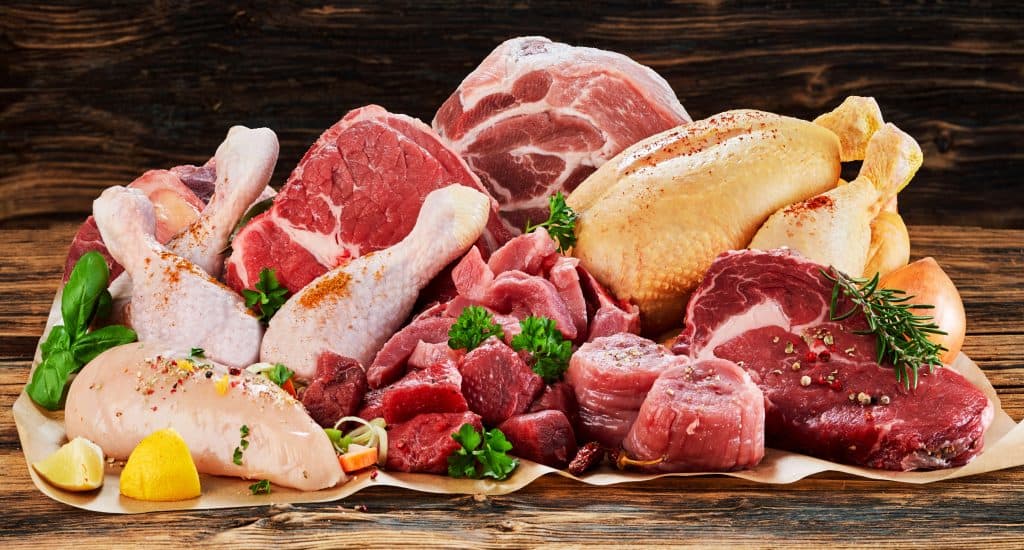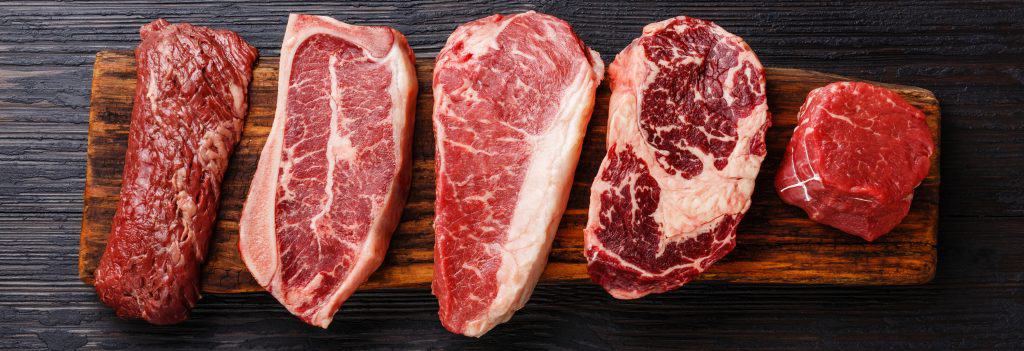What to Look for When Shopping for High-Quality Meat
When shopping for meat, especially red meat, many people prefer to select from the shelf the meat appearing the most red. But did you know that brown meat can still be good,consumable, and tasty? If this is news to you, in this article we will explain the most important things to look for when buying meat.

The life of the animals
It is important that animals live a quality life before getting slaughtered as less stress for them means a quality of meat which will be more tender.
Safety standards
All packed food, including meat, must be approved by the food and safety department. Therefore, when shopping for your meat, it’s important to look for the safety certification label to ensure you’re purchasing good quality healthy meat. If the meat of your choice doesn’t have the certification label, avoid purchasing it.
Cleanliness
There is no way to emphasise this point enough. When shopping for meat, ensure the environment is clean as well as the packaging contamination can easily occur, and with storage and handling of meat correctly can cause severe health issues. Only purchase meat from a reputable premium gourmet butcher known for providing high-quality, fresh meat that is handled or packed in a way that promotes cleanliness and freshness.
One thing you are absolutely going to need if you are buying and preparing meat is a kitchen knife. To help you decide what knife to choose, we have done a massive guide all about kitchen knives. Make sure to have a read!
Expiry date
The expiry date identifies how long the meat will be fresh for and it is advisable to not consume past this date. Some people might choose to use meat one or two days past the expiry date to make stews, but we don’t recommend this.
Colour
The colour of meat says a lot, however, it’s vital to understand that the colour depends on the meat type. Most people expect red meat to be deep dark red, though it can vary from brown to red and even towards tints of purple. When red meat becomes brown, it often means that it has just been exposed to oxygen but is safe for consumption.
On the other hand, pork meat should be light pink and the colour of poultry depends on the type of chickens and their diet. Fresh poultry meat might be white or yellow if corn fed.
When selecting meat, it’s vital to avoid purchasing discoloured meat. If the meat has dark brown or purple patches it could indicate poor handling and storage. It might also come from an old animal. In both cases the meat will spoil more quickly. Lastly, avoid purchasing meat with clots, bruises, and green tints on joints, especially when it comes to poultry.
Smell
The smell of fresh meat is particular and different meats have different smells, and it is essential to know how fresh meats should smell.
Chicken usually has no particular smell and only sometimes a mild, meaty smell. As for beef, lamb, and goat, it’s easier to tell the difference between fresh and foul smells. If the smell is too strong and pungent you should avoid purchasing it.
Texture and tenderness
After studying red meat closely, you’ll notice the fibres. The grains of fibres indicate the tenderness or toughness of the meat. Rough meat grains with lots of visible muscle fibres indicate that the meat is tougher. Such cuts are ideal for low and slow cooking. If no fibres are visible, as in tenderloin, the meat will be soft and tender. Beef should always be dense, firm, and dry. Meat that is hung or ‘aged’ to tenderise loses liquid and develops a deeper flavour, which is one reason prices are more expensive for such meat. The muscle fibres should be closely packed and even. If the meat looks like it’s falling apart, it might indicate poor handling or low quality. Poultry should also be firm and dry. If it’s sticky and slimy, avoid it at all costs. This applies to all meat, including lamb, pork, and beef.
Fat marbling

Conclusion
It’s vital to mention that meat with white dots and streaks of fat equals a juicier, tender piece with more flavour. This type of fat is referred to as marbling. The finer the marbling, the tastier the meat. Due to these qualities, meat with marbling is mostly preferred but more expensive.
When buying meat, it’s essential to be knowledgeable to ensure you purchase nothing but the best. If you are unsure of what to look for, ask your butcher to select the best meat depending on the recipe you plan to make. The information above will help you choose only high quality when shopping for meat.